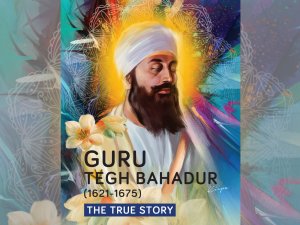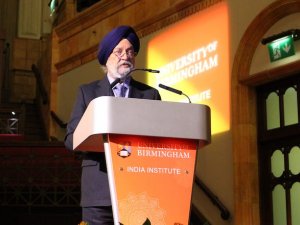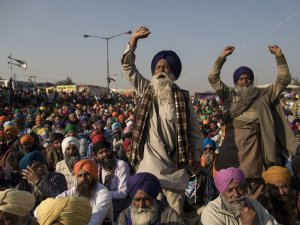One important objective of the interpretation of Sikh tradition is to seek Gurbani guidance in different spheres of modern life.
It is with the above in mind that I am always on the lookout for Sikh research which relates to modern issues. A paper written by the renowned historian, Dr J S Grewal some years ago with the heading "The Rule of Law and Sikh Thought" (Journal of Sikh Studies, August 1984) is of interest, because, the Rule of law is one pillar of any modern democratic system in which power is vested in the ordinary people.
According to Dr Grewal, the rule of law "assumes the supremacy of impersonal law over personal discretion and arbitrary use of power. In its constitutional aspect, though it is not inevitably egalitarian, it carries an echo of democratic action and legislation."
Therefore, it is necessary for the research student of Sikhi (preferred to "Sikhism") to identify those aspects of Sikh thought, processes and tradition which relate to the "rule of law". In this context we also need to identify the relevance of Sikh socio-political institutions.
Perhaps Dr Grewal should have mentioned that one danger in doing this and similar research is that subconsciously, Sikhi can be "tailored" to a researcher's own biases. In other words when seeking Sikhi answers to modern questions, no attempt should be made to interpret Gurbani so that it seems to agree with what may be fashionable thinking today. Those in the interfaith area or interfacing with the establishment carry a responsibility to ensure that the independence of Sikh thought should be the underlying postulate when researching Sikhi and Sikh institutions.
Guru Nanak's Bani shows clear understanding of the socio-religious systems of his times. Asa ki Var is just one example. Guru Nanak identified himself with the common people, with the "lowliest of the low". He empathised with their suffering and sensed their need for just institutions and just laws. And so he set about laying the foundation of a new system for the New Age, which took into account the needs of the common people.
To quote Dr J S Grewal, the rule of law "assumes the supremacy of impersonal law over personal discretion and arbitrary use of power." Therefore, we look for those ideas and socio-political institutions in the Sikh tradition, which might relate to the modern concept of the rule of law.
The most important of these are the idea of equality and the twin doctrine of Sikh holy Scripture, Guru Granth, and the Guru Panth, the Order of the Khalsa. It may be assumed that the Guru Granth and Guru Panth twin track - spiritual and temporal - approach to the whole-life ideology of Sikhi, led to the development of the traditional Sikh institutions which stressed equality and collective responsibility. The independent institutions of Sri Akal Takht Sahib and the Sarbatt Khalsa promoted relevant processes and procedures.
Guru Nanak Sahib aligned himself with the ordinary people; with "the lowliest of the low". No matter what the background of the people, they could follow Guru Nanak's path. For this reason the universality of Guru Nanak's message for humankind was "the obverse of his idea of equality." All human beings are equal before One Creator and they are equal before the Guru. Sangat and langar symbolize that equality.
As these institutions developed, the Guru personality began to be replaced by the Guru Bani (Guru's Word) in Guru Granth Sahib. As the Sikhs became more directly linked with Bani and, collectively, as Guru Sangat, assumed the role of the person Guru. The Tenth Nanak, Guru Gobind Singh, completed the process and removed the Guru person completely. There was no place in this system for intermediaries like masands, gurudoms and derawadis.
The temporal power was with the Guru-Sangat or Guru-Panth empowered to interpret the Guru-Bani in Guru Granth Sahib and to direct the affairs of the Khalsa Panth. This was the Sikhi version of "democracy" and rule of (impersonal) law which applied equally to all. Yet, the rights of the individual were respected and protected as were those of non-Sikhs.
Development of the Dal Khalsa institution strengthened the military position of the Khalsa. The clash between the egalitarian Khalsa Panth and the authoritarian and oppressive state, which was increasingly interfering in Sikh affairs, was inevitable. The Panth was finally victorious after a long and bloody struggle, which required massive sacrifices. The Sikh organisational discipline based on central values of human dignity and equality before One Creator, withstood the test.
The Khalsa subscribed to a code of conduct based on Gurbani teachings as interpreted by the Guru Panth. The current version of the code is the Sikh Reht Maryada.
However, according to Dr Grewal "the inheritance of a noble and comprehensive ideal of equality and collective responsibility, which had a kind of potential to develop into a kind of "rule of law" was lost in the rapid process of erecting kingdoms and empires… the Sikh resurgents of the late 19th century had to discover their inheritance all afresh."
Rediscovering our Sikh heritage is a continual process which involves research of Sikh tradition and interpretation of Gurbani in the context of current issues. Continual research is also the Guru's instruction e.g. one definition Sikhi is that Sikhi is the meditative study of the Guru's teaching (Sikhi sikhia Gur vichaar).
Standing panels of Sikh scholars should research Gurbani to seek answers to modern questions arising from rapid developments in social, economic, science and technology, constitutional and legal fields. There are global challenges to be faced.
The Guru did not prescribe any fixed code for the Sikhs but laid down the guiding principles for interpretation in relation to different times and places. The Guru-Panth approved Sikh Reht Maryada too can be updated by the Guru-Panth as guided by Gurbani in Guru Granth Sahib.
Independent Sikh institutions need to re-discover the decision making processes and procedures which take into account the global dimension of the Khalsa Panth.





